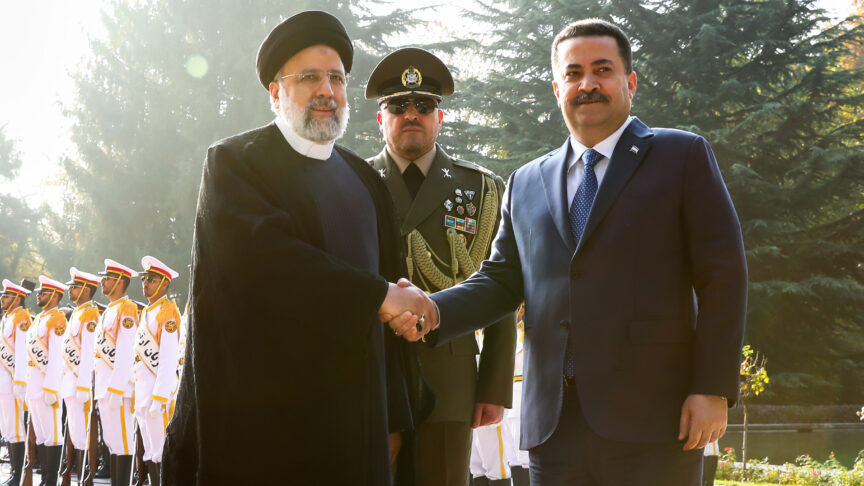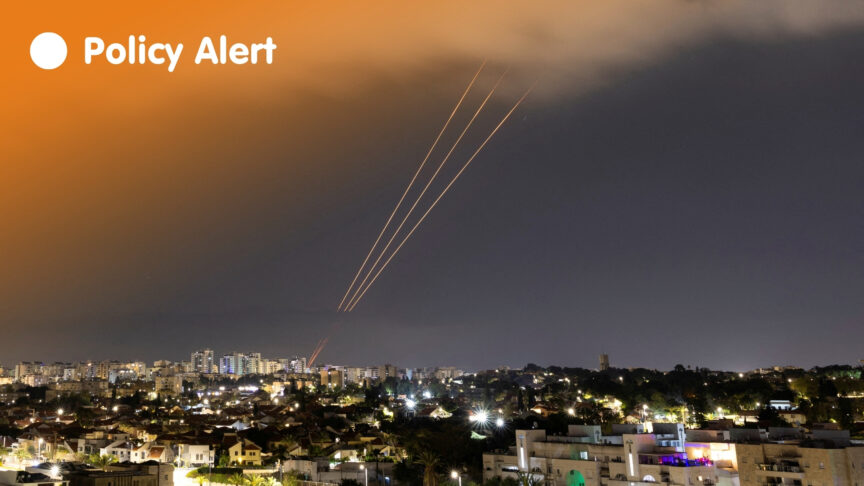What we get wrong about Yemen
Foreign intervention in a local fight would be the worst course anyone could take.
This article was first published by Politico.
With reports Wednesday that besieged President Abdo Rabbu Mansour Hadi might have fled his palace, Yemen appears closer to collapsing into a total failed state. Meanwhile the headlines have started to lump the conflict in Yemen—a country that President Obama only last September portrayed as an anti-terrorism success story—together with the sectarian fighting in Iraq and Syria; “Shia rebels” are said to be battling “Sunni tribesmen,” allegedly taking support from Iran as they fight Yemen’s Saudi Arabia-backed Sunni president. The implication is that the conflict-ridden Arabian country is just another front in an emerging, region-wide Sunni-Shia war, and that someone had better do something fast!
The truth is far more complex, and the solution right now should be more along the lines of: Just stay out of it. While the chief combatants in the civil war are certainly playing the sectarian card to some degree, there is reason to think that Yemen will not necessarily become part of some regional sectarian conflict. Regardless of their foreign ties, both the Shiite Houthis and their Sunni opponents are deeply rooted in Yemen, and they are motivated primarily by local issues.
The main danger now is that the Western powers, Saudi Arabia or Egypt will overreact and seek to intervene, ostensibly to counter Iranian influence or to quash the efforts of Al Qaeda in the Arabian Peninsula to gain territory. Yet foreign intervention could very well be the worst approach now—further regionalizing what is still a local fight, injecting a stronger sectarian tone into the conflict while threatening to push Yemen closer to implosion.
The roots of Yemen’s current conflict date back more than a decade, to a little-covered series of six brutal wars fought by the government of Yemen’s former president, Ali Abdullah Saleh, in the aim of defeating an insurgent group—widely referred to as the Houthis—based in the country’s far north. The Houthis’ founder, firebrand cleric Hussein al-Houthi, hailed from a prominent Zaidi Shi’a family and was a leader of the revival of Zaidism, a heterodox Shi’a sect found nearly exclusively in Yemen’s mountainous north. Notably the group’s foundation was, itself, rooted in a reaction to foreign intervention: a key aspect of the Houthis ideology was shoring up Zaidism against the perceived threat of the influence of Saudi-influenced ideologies and a general condemnation of the Yemeni government’s alliance with the United States, which, along with complaints regarding . the government’s corruption and the marginalization of much of the Houthis’ home areas in Saada constituted the group’s key grievances.
The Houthis managed to capitalize on Yemen’s Arab Spring-inspired uprising against former president Ali Abdullah Saleh in 2011, using the power vacuum to expand their influence south towards Sanaa. But it wasn’t simply a matter of benefitting from the state’s collapse. Sidelined in the internationally-backed, Gulf Cooperation Council (GCC)-brokered agreement that lead to Saleh’s exit in power, the Houthis shrewdly positioned themselves as an opposition faction, standing out for their sharp criticisms of Yemen’s transitional government, which failed to reverse Yemen’s deteriorating security and economic situation and was riddled with corruption, to say nothing of the western and Gulf leaders appeared to take a blind eye to such factors. The group managed to pick up swaths of new supporters outside their traditional demographics—while laying the groundwork for an alliance of convenience against the Islah party with former president Saleh’s backers—earning a mainstream of sorts with the group’s participation in Yemen’s “Conference of National Dialogue,” an extended UN-backed summit that aimed to sketch the shape of a new constitution for the country.
It is a testament to the faults of Yemen’s transitional government that even many Yemenis with deep aversion to the Houthis initially welcomed their takeover of Sanaa in September 21st of last year. Initially, it did appear that thing could be heading in a positive direction: Houthi representatives quickly inked an agreement with Hadi and other political factions; this agreement lead to the formation of a new cabinet lead by a new prime minister, Khaled Bahah, a widely respected technocrat. But tensions between the Houthis and other factions continued to grow, exploding in a crisis over Yemen’s draft constitution that saw the besieging of the homes of the president, prime minister and other key officials and the kidnapping of key presidential aide Ahmed Awad bin Mubarak. This culminated in the resignation of the president, prime minister and cabinet on January 21st, to the general shock and consternation of the Houthis, who had until then preferred to exert influence from behind the scenes rather than overtly within the seat of power.
After that Hadi fled to his palace in Aden—at least until this week—and reasserted his claim to the presidency, while the Houthis set up their own governance structures in Sanaa. While a number of western and Arab diplomats traveled to the southern city to recognize him as the country’s legitimate president, he now appears to be on his way out—a telling testimony unable to capitalize on the tremendous amount of international support he has received to establish a lasting power base in Yemen itself.
Yemen’s future path remains anything but clear. Even as their fighters have continued to more forward militarily, Houthi spokespeople have stressed that the group ultimately is open to dialogue and power-sharing. The fighters of Al Qaeda in the Arabian Peninsula (AQAP) aim to stoke the sectarian flames, taking advantage of the potential power vacuum while capitalizing on the grievances of Yemeni Sunnis frustrated with the rise of the Houthis. The plans of supporters of former president Saleh—who remain quite powerful and have been engaged in an alliance of convenience with the Houthis for some time—remain unclear. Indeed, even Hadi’s location remains unknown—he’s alternatively reported been reported as on a boat, in the eastern Yemeni city of Mukalla, and in an undisclosed “secure location.”
But what is abundantly clear at the moment is that this remains, by and large, an internal Yemeni political conflict—one that, despite frequent sectarian mischaracterizations and potential regional implications, remains deeply rooted in local Yemeni issues.
And if history is a guide, foreign intervention will only stand to exacerbate the situation. Ironically, talk now centers on a potential Saudi Arabian and Egyptian military intervention in Yemen, a scenario that immediately brought to mind the memory of North Yemen’s 1960s Civil War which saw both sides intervene—albeit on different sides—in a matter which only appeared to draw the conflict out further. This is not to say that there isn’t a place for foreign powers to aid Yemeni factions in negotiating some new political settlement. But any nation that aims to make Yemen’s fight their own is more than likely to come out on the losing side.
The European Council on Foreign Relations does not take collective positions. ECFR publications only represent the views of their individual authors.


